Adventures in Downsizing
Are we living a minimalist lifestyle? Maybe? Honestly, I'm not 100% sure. Achieving our goal of Freedom of Choice wasn't meant to be about minimalist living, and we're not really following the minimalism trend that's become so popular. But, while we don't think of ourselves as minimalist, our travel-based lifestyle strives for many of the same things. Similar to the goals of people living a minimalist lifestyle, our lifestyle is about simplifying life, reducing stress, and prioritizing experiences over the accumulation of stuff.
I pose the question above because what follows feels an awful lot like a post on minimalism. It's the story of downsizing our lives to help achieve Freedom of Choice. It's about living with less to travel more. It's about how we got rid of 95% percent of our belongings in exchange for greater freedom. An exercise that was all about identifying what we truly love and actually need and getting rid of everything else.
It's a story of failed attempts, kicking the can, and eventual success. Along the way, we learned a lot about the potential pitfalls of downsizing and how to work around them. Ultimately, we developed an effective approach which accomplished in three months, what we failed to achieve during the preceding 5.5 years.
Below we tell our story and describe our approach for tackling our most dreaded of to-dos. It's an approach that helped us go from a three-story townhouse filled with stuff to living a travel-rich life filled with only the things we need.
At the bottom of this post, we included some tips on how to minimize your stuff.
Whether your downsizing goals are simply about reducing clutter, living with less than you do now, traveling more, or living a minimalist lifestyle, we think you'll benefit from our experience and advice. We hope you'll find our story helpful as you pursue your own brand of minimalism.
So then, is this a post on minimalism? I'm not exactly sure. You'll just have to keep reading and decide for yourself! If you'd like to skip to a particular section, click the table of contents (toc) below.
Table of Contents
- 1 Adventures in Downsizing
- 2 Why Downsize?
- 3 Kicking the Can – a Slow Start to Minimalist Living
- 4 Layers of the Onion
- 5 A Revised Approach – A Quicker, Easier Path to Minimalist Living
- 6 Seeking Guidance from the Past
- 7 Downsizing: A Two-Phase Project
- 8 Setting Clear Guidelines - the 3-Step Process
- 9 3 Tips to Make Disposal Easier
- 10 Getting it Done
- 11 Downsizing Tips & Advice
Disclosure: This page may contain affiliate links. Clicking through for additional information or to make a purchase may result in a small commission at no extra cost to you. We hope you find this information useful and welcome any questions you may have.
Why Downsize?
When we returned from our overland trip back in 2008, we were transformed. After three years of traveling across Europe, Africa, and North America, our view of what's possible had evolved. Living in Colorado after our trip, we quickly dreamt up new adventures. We wanted to sail to the South Pacific, motorcycle across the Americas, and live in places like Tuscany and Santa Barbara.
At the heart of our dreams was the idea of location independence – the final building block required for Freedom of Choice. Simply put, by achieving location independence, we wanted a life that afforded us the freedom to pick up and go anywhere. A lifestyle where we could choose where we live, work, and play. No shackles binding us to a place.
But becoming truly location independent demanded we do the one thing we dreaded most – downsize. And to downsize we needed to digitize our lives (i.e., go paperless) and eliminate any material possessions keeping us in place.
But before I go further, a note upfront. Downsizing, for us, has never been about living without. We enjoy being comfortable, appreciate nice things, and have no aspirations to live a life of austerity. Rather, it's about living with less. And by less, I mean living with less stuff – keeping the things we truly love and the things we need and getting rid of everything else.
Downsizing, for us, is about applying a minimalist approach to all the ‘stuff' in our lives. Our downsizing goals are about simplifying and aligning our physical possessions with a travel-based lifestyle built around go-anywhere freedom. Since our plans are built around living in many places and traveling often, we want our belongings to fit into our plans instead of working against them.
In practice, this means two things:
Digitizing our Lives
We wanted to digitize our lives so that all our documents, photos, and videos are with us on the road. The goal is to go paperless. No albums filled with photos we never see or documents we need but can't access.
Keep Only What We Need
We wanted to eliminate the logistical and financial burden of our belongings.
Logistically, this means not holding on to stuff that takes a lot of effort to pack and unpack, move from place to place, maintain, and store.
Financially, it means avoiding the storage, moving, maintenance, and depreciation costs associated with holding on to stuff we don't need and seldom use.
"Ultimately, our goal was to convert stuff we don't need from depreciating assets, which cost us money to store and maintain, into cash that we can invest and grow."
Kicking the Can – a Slow Start to Minimalist Living
I'd love to say downsizing was easy. But in the beginning, figuring out how to live with less stuff was hard work. Starting when we lived in Colorado, we made several half-hearted attempts to downsize with limited results. Each time we tackled the project with fresh resolve, rolling our sleeves up and digging into piles of our things. The question was always the same. ‘Keep it or get rid of it?' It's a simple enough question, which invariably led us headfirst into endless debate.
With each new attempt at downsizing, we'd start with the easy stuff, loading up bags with old clothes, carting off that pre-flat screen TV, or bidding farewell to a pair of snow skis that had long lost their camber. But soon enough, we'd find ourselves stalled – unable to decide whether something stays or goes:
"I know we haven't used this four-season tent in a while, but if we get into winter camping, it will come in handy. I think we paid $450 for it and it's in great shape. Should we really get rid of it? Maybe we should wait a while and see if we need it."
Honestly, I quickly came to dread our adventures in downsizing. Staring at piles of our stuff, mired in painful debate, was brutal. Once the quick and easy stuff was gone, things would quickly devolve into tedious discussion. ‘But I like it.' ‘But we paid way more than we'll get if we sell it.' ‘But we might need it later.' ‘But it was a gift from my mom.' It was a discussion that left us feeling drained and deflated as we stared out the window imagining better things we could be doing with our time.
After a couple of weekends of limited progress, it was always the same:
Jim: "Hey, what's next on our to-do list?"
Sheri: "Let's see. Looks like we need to schedule an appointment to have our appendixes removed. Remember, we said we want to eliminate the risk of appendicitis when traveling in remote places?"
Jim: "Oh, yeah, right. Almost forgot. That's important. Not trying to kick the can on this downsizing stuff but perhaps we could go ahead and get appendectomies instead."
Sheri: "Well, what's more important? Downsizing or voluntary appendectomies?"
Jim / Sheri: "Definitely, appendectomies!"
Layers of the Onion
The thing is, you can look at downsizing like peeling layers of an onion. With each layer you peel, you're able to live with less stuff. If you think of the first layer as the easiest, then downsizing gets progressively harder as you work your way from unwanted things to the items you assign the highest value.
To illustrate, I think of it this way:
The Feel-Good Layers
In the beginning, the first couple of layers are pretty easy as you unload items you care about least. These layers are made up of stuff like the old clothes and pre-flat screen TV I mentioned above. All the unwanted stuff that fills bags for Goodwill and makes you feel a sense of progress.
The Progress Stranglers
I like to think of Progress Stranglers as hidden layers. Layers you don't expect until you're sitting on the floor in the den staring at a pile of stuff you have no idea what to do with.
In our experience, it's stuff like a 12-year-old laptop filled with personal data, a bag of used batteries, five half-used rolls of masking tape, some spare parts for god-knows-what, and a pile of VHS tapes filled with home videos. Stuff you forgot you had, which vomit up when you decide to live with less. An unexpected time-suck where you try to answer the question ‘What the hell do we do with it? ‘
Why Would I get Rid of This?
Next come layers requiring a little more thought. In our case, these were layers filled with items we liked and used frequently but didn't figure into our desire for go-anywhere freedom - things like our flat screen TV and KTM 990 Adventure. Things with monetary value, but no real emotional attachment, which we liked, used, and had no burning desire to part with. "Remind me again why we're getting rid of our TV?"
Up until this point, things weren't too bad. The first few layers may have been challenging, but most of the items were replaceable and lacked meaningful attachment. But, peel any deeper and you're committed. They're the layers that'll have you questioning your minimalist lifestyle goals and wondering if it's really so great living with less stuff.
Emotional Baggage / Guilt Trip Layers
The next layers are tricky. Now you're evaluating items, sometimes irreplaceable, which come with baggage. And by baggage, I mean emotional and/or guilt attachment. Examples include things like your 3rd-grade spelling bee trophy, and a matching set of monogrammed throw pillows aunt Mary knitted you as a wedding present.
The Irreplaceable Core
Finally, there's the core. These layers are downright dangerous. The ones that have you questioning the whole living with less thing. Now we're talking about your most valued and irreplaceable possessions. Items like a tribal neckless made of teeth we bartered for in a small village in Ethiopia's Omo Valley, old passports filled with stamps from past travels, and our university diplomas. Stuff that warrants caution as getting rid of it can't be undone.
A Revised Approach – A Quicker, Easier Path to Minimalist Living
It wasn't until we kicked the downsizing can to the end of the road that we got serious about solving the problem. By the spring of 2014, all the other pieces of our Freedom of Choice puzzle were in place, and downsizing was the only project left. Come hell or high water, we were leaving for Santa Barbara on August 1st, which gave us just three months to accomplish what we failed to complete during the preceding 5 ½ years.
But we knew to get it done in three months was going to be tricky. During past attempts, we repeated the same mistakes again and again. By not setting clear guidelines upfront, we invited downsizing hell - endless hours of slow, tedious, and emotional debate about each-and-every thing we owned. Should we keep it? How do we get rid of it?
To accomplish our goal, we needed a revised approach. Bound by a hard deadline, our plan was simple. The idea was to establish clear guidelines to direct our ‘keep it or lose it?' decisions and guide how we dispose of our stuff. The goal in creating guidelines was to be as objective as possible to eliminate our biggest hurdle - emotional debate and round-and-round ‘What if.'
"By setting clear guidelines, our goal was to enable quick and easy
decisions. No ‘Should we keep it?' or ‘How do we dispose of it?' debate for every item."
Seeking Guidance from the Past
To quickly get rid of our stuff, we knew we needed a change in perspective. And for that, we reflected on our past. And what we realized by looking back, were three crucial truths about our possessions:
Out of Sight, Out of Mind
Our three-year Africa trip had been a trial separation from our belongings. When putting our stuff in storage before our trip, I recall thinking about how we were going to miss our house and our things. But as soon as we locked the door on our storage unit, we forgot about everything inside. For three years, we didn't miss any of it.
Our ‘Important' Mementos Lived in the Attic
Many of the items we considered valuable, our childhood trophies, for example, spent life packed away in some attic box or ignored on a closet shelf. And we rarely thought about any of it.
Guilt was a Major Obstacle
Our house was full of items we kept mainly out of guilt. Examples include gifts from family and friends and many of our childhood mementos. How could we get rid of those monogrammed throw pillows aunt Mary knitted us for our wedding?
These simple truths were important. They were evidence that the vast majority of our belongings were less valuable to us than the weight we assigned to them. Our experience was a trial run of living with less, and it had been a success. After all, if our stuff is so valuable, why didn't we miss it when it was packed away?
"Downsizing was easier after realizing most of our belongings were less valuable to us than we historically thought."
Downsizing: A Two-Phase Project
To make downsizing more manageable, we divided the project into two phases:
Phase 1: The Great Purge
This phase involved identifying the things we needed, and selling, donating, recycling, or trashing everything else. For this phase, we gave ourselves exactly three months with a hard stop on July 31st.
Phase 2: Digitizing Our Lives
The second phase involved digitizing all documents, photos, and videos. This, hands down, was the most dreaded task and for that reason, we kicked the can all the way into our new life in Santa Barbara, where we committed to having it completed before beginning our travels.
Setting Clear Guidelines - the 3-Step Process
To facilitate decision making, we developed a simple three-step process, which utilized a decision tree to help us identify what to keep and determine how to dispose of everything else:
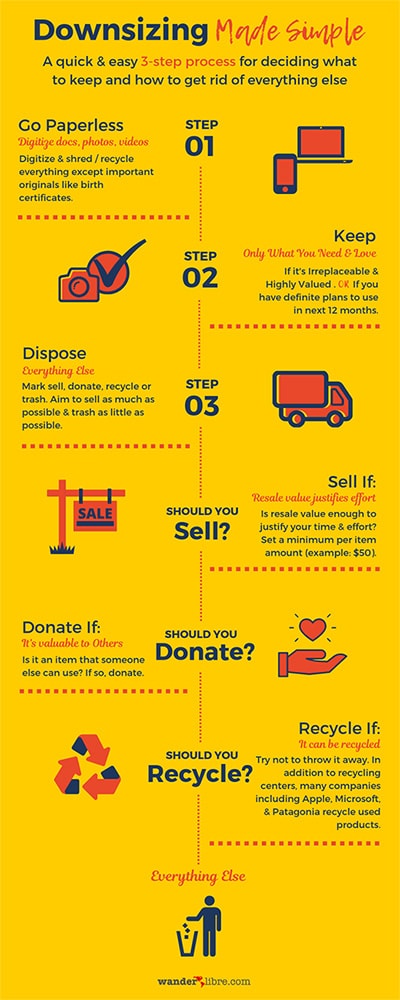
Step 1: Identify Items to Digitize
If it's written on paper, photos from slides/negatives, or a videotape, we put it aside to digitize and, in most cases, shred/destroy.
Step 2: Identify Items to Keep
To quickly and easily identify what stays, we asked ourselves two simple questions:
1) Is it irreplaceable and highly valued?
2) Do we have definite plans to use it during our upcoming travels?
If the answer to either of these questions was yes, it was marked as ‘Keep.'
Importantly, our goal wasn't to get it 100% right. Guided by our simple truths above, we didn't have to. As long as we answered the two questions as objectively as possible, we couldn't go too wrong. If our upcoming plans require it, we keep it. If it's important and irreplaceable, we keep it.
Everything else was considered disposable and, IF we disposed of something we later need, it's replaceable. And, using history as our guide, we knew the probability of making lots of mistakes was low. After all, we never missed any of our stuff during all those years it was in storage.
"Our goal wasn't to get 100% of our ‘keep or dispose' decisions right. It was to get it mostly right and avoid irreversible mistakes."
Note: Not to jump ahead, but I'm writing this post five years after downsizing, and we made no irreversible mistakes, and I can think of only three items we disposed of, which we've since replaced. Everything else has been out of sight, out of mind.
Step 3: Decide How to Dispose of Everything Else
For everything else, the questions became how to dispose of it – Sell / Donate / Recycle / Trash. Our goal was to sell as much as possible and trash as little as possible.
To decide how to dispose of each item, we asked a simple question as follows:
Sell:
Is the item's estimated value enough to justify the time and effort required to sell it (we set our minimum at $50)? If the answer is yes, mark it ‘Sell.' If no, move to donate.
Donate:
Is the item valuable to someone else? If yes, mark it ‘Donate.' If no, move to recycle.
Recycle:
Can it be recycled? If yes, mark it ‘Recycle.' If no, move to trash.
Trash:
Everything else.
3 Tips to Make Disposal Easier
In cases where we found it hard to part with an item, we took the following approach to make it a little easier to say goodbye.
Take a Photo as a Memento
This idea was particularly helpful when disposing of items with emotional baggage like childhood awards and trophies.
Find it a Good Home
For things like my perfectly broken-in high school baseball glove and our beloved Land Cruiser, we put in a little effort to find a good home. Our Land Cruiser, for example, found a perfect home in Montana, where the new owner gave her a total make-over. She even has her own Instagram account!
Offer a Right of First Refusal
For some items, we also offered a right of first refusal to friends and family.
Example: If we planned to dispose of my childhood blanket, I let my mom know we needed to get rid of it and offered it to her, in case she wanted to keep it.
This strategy was particularly helpful for items with guilt attachment. The simple idea was that by offering it to someone whom we knew valued it, we were giving them a choice to keep or dispose of it. If they chose to keep it, great; if they declined, it reduced our guilt.
Getting it Done
Ok, so I'll jump straight to the punchline. Setting clear guidelines really helped! Unlike previous attempts, we made short work of identifying what to keep. The challenge was getting rid of the other 95%.
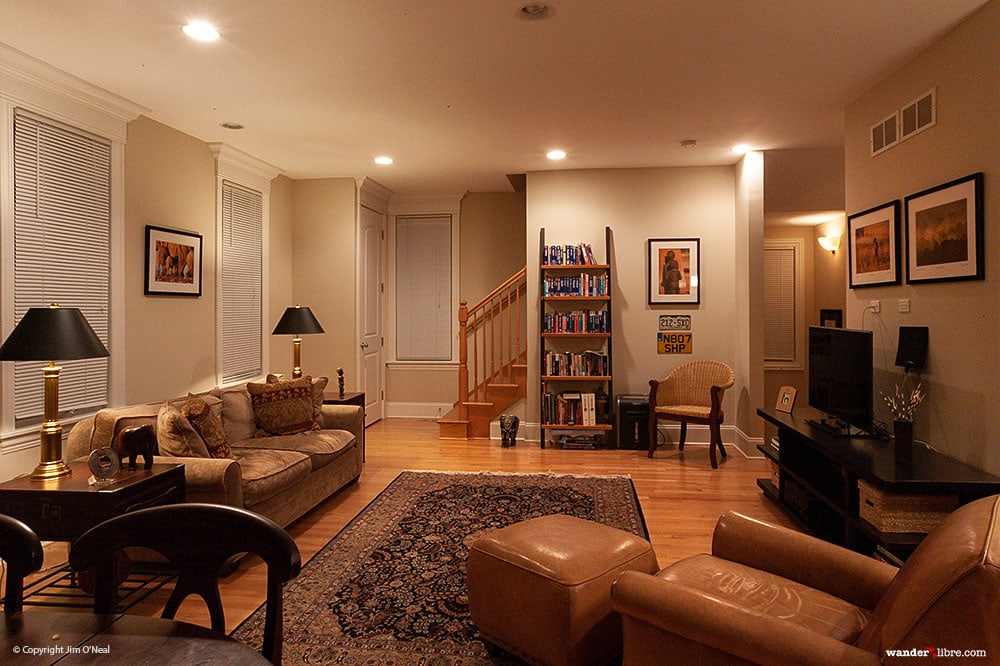
Everything Must Go
With our tiny ‘keep' pile set off to the side, everything else had to go. And by everything, I mean everything. Not just our furniture and flat-screen TV, but all the little things we hadn't thought about before the project - stuff like our overused toilet plunger and family size tube of Preparation H.
With everything we decided to get rid of marked either sell, donate, recycle, or trash, we rolled up our sleeves and got to it.
Step Right Up, Let's Make a Deal
During the summer of 2014, we became purveyors of everything from sleeping bags to motorcycle tires. I was head of sales, while Sheri ran shipping and logistics.
As head of sales, I viewed everyone as a potential customer – friends, co-workers, family, neighbors, the guy walking his dog in front of our house. Anyone who showed the slightest interest was on my radar. At home and work, I took to selling used outdoor gear like a guy hocking watches from a trench coat. If I was at lunch with a co-worker and she mentioned a recent trip to rainy Seattle, I saw an opportunity to cross-sell a Gore-Tex jacket.
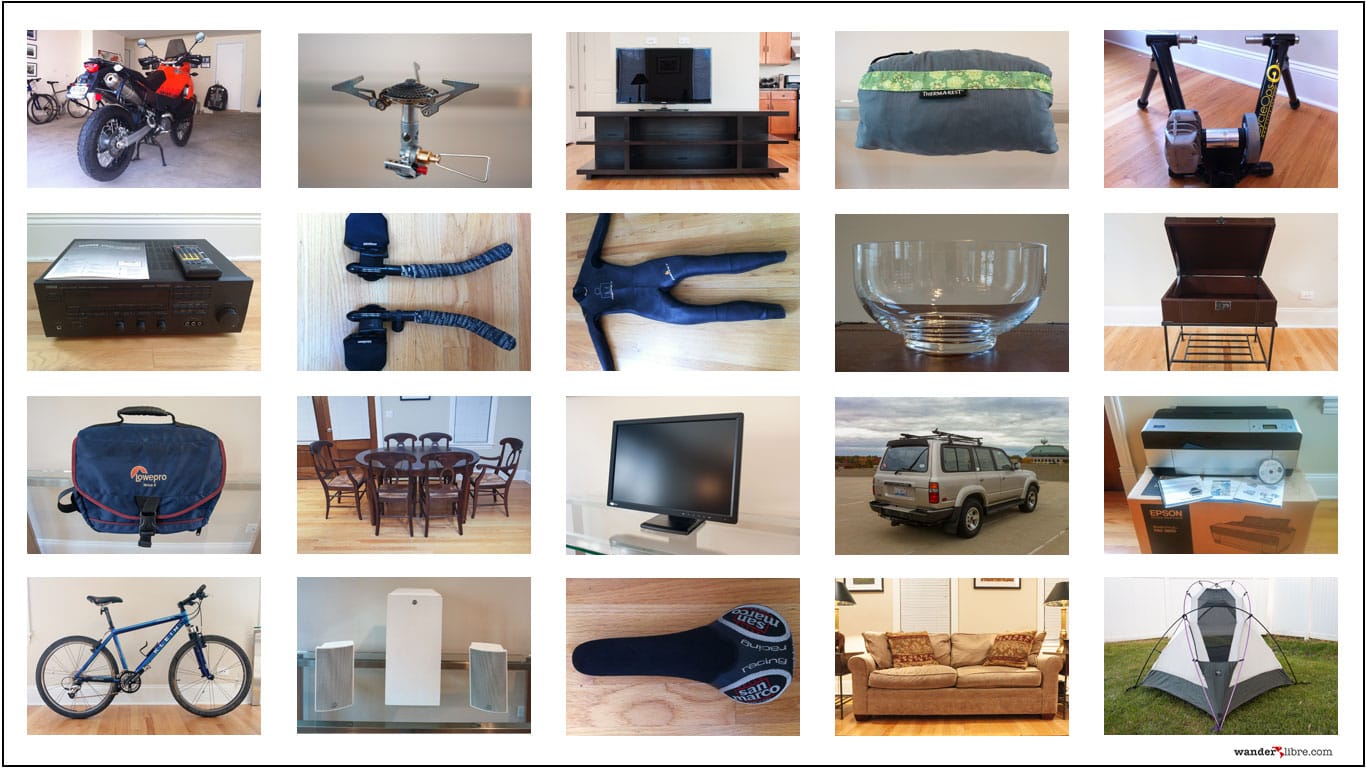
It was an effective campaign. By the time it was all said and done, I unloaded everything from Patagonia and The North Face jackets to Eagle Creek luggage and an ENO Hammock. Everyone seemed exceedingly pleased with their purchases, which I attribute less to effective sales technique and more to ‘let's make a deal' pricing.
Selling Online
But selling to friends and family was only a niche. For the heavy lifting, we turned to sites like eBay, Craig's List, Autotrader, and ADV Rider, where we had so many items listed it required serious spreadsheet work just to keep track.
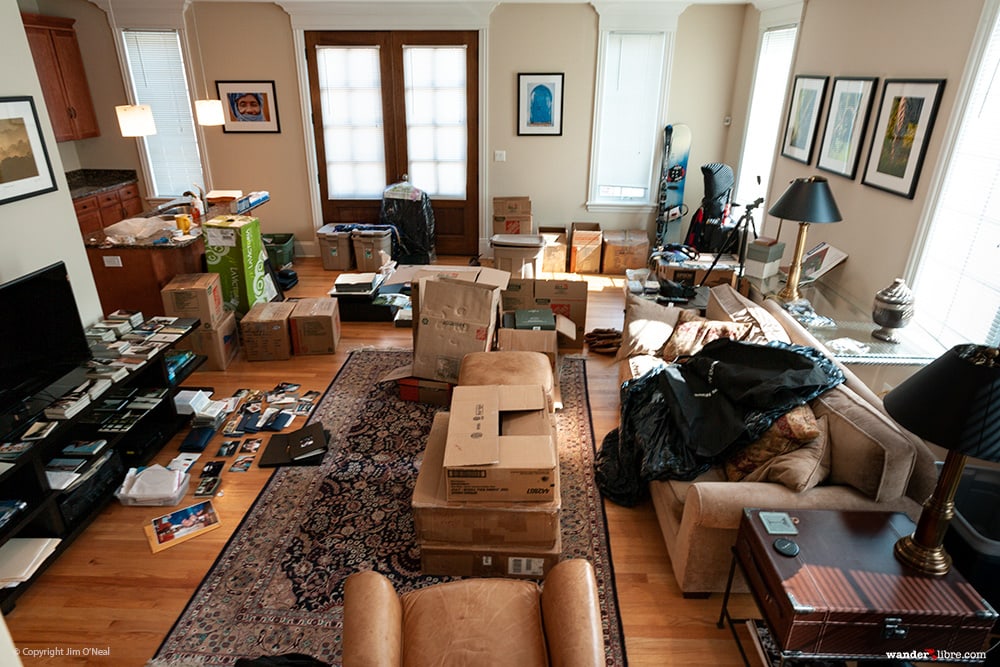
Not surprisingly, Craig's List and eBay accounted for the bulk of sales. Soon our house doubled as a showroom and shipping depot, where we worked day and night to categorize, photograph, and describe anything we thought would fetch over $50.
Selling from the Trunk of a Car
Selling on Craig's List was foreign to us and, living in a big city, we had reservations about inviting strangers into our home.
In the beginning, we played it safe by meeting in public. For smaller items, this was effective. Although I'll admit, I felt a little shady standing in a Starbucks parking lot touting stereo speakers from the back of my car.
"I've got a 40" top of the line Samsung flat screen. It's the real deal — not some Chinese knockoff. Smart TV. Full HD. It's got everything. I only sell the finest electronics from the trunk of my car. I like you, so I'll make you a special price. Plus, if you buy it today, I'll throw in a toaster from Restoration Hardware!"
Like a traveling Craig's List salesman, I took to Chicago's streets, where I unloaded a wide array of items including lamps at a Marriott, a 40" flat screen at our gym, and a watch in a Starbucks.
But after assessing the logistics of displaying bedroom furniture in a Walgreens parking lot, I realized larger items would be hard to take on the road.
For that, we relaxed our security protocol, converting our garage into a Craig's List sales floor. This worked well. Not exactly the showroom at Room & Board, but certainly on par with the guys you see selling furniture out of a cargo van. Plus, much to our delight, everyone was friendly and polite and lacked that murder/rapist vibe we try to keep out of the house.
Giving Away the Farm
As the weeks slipped by, our house slowly emptied. But given how much time we were putting in, I was surprised by how much was left. While much remained to be sold, still more was marked for donation.
The bulk of what we gave away were small items with low to moderate value. Items that were valuable, but weren't valuable enough to warrant the time and effort to sell - stuff like my high school baseball glove, coffee table books, old camera bags, and a kitchen full of Williams Sonoma utensils. Collectively there was enough to fill countless boxes – each bound for a friend, neighbor, co-worker, or donation center like Goodwill.
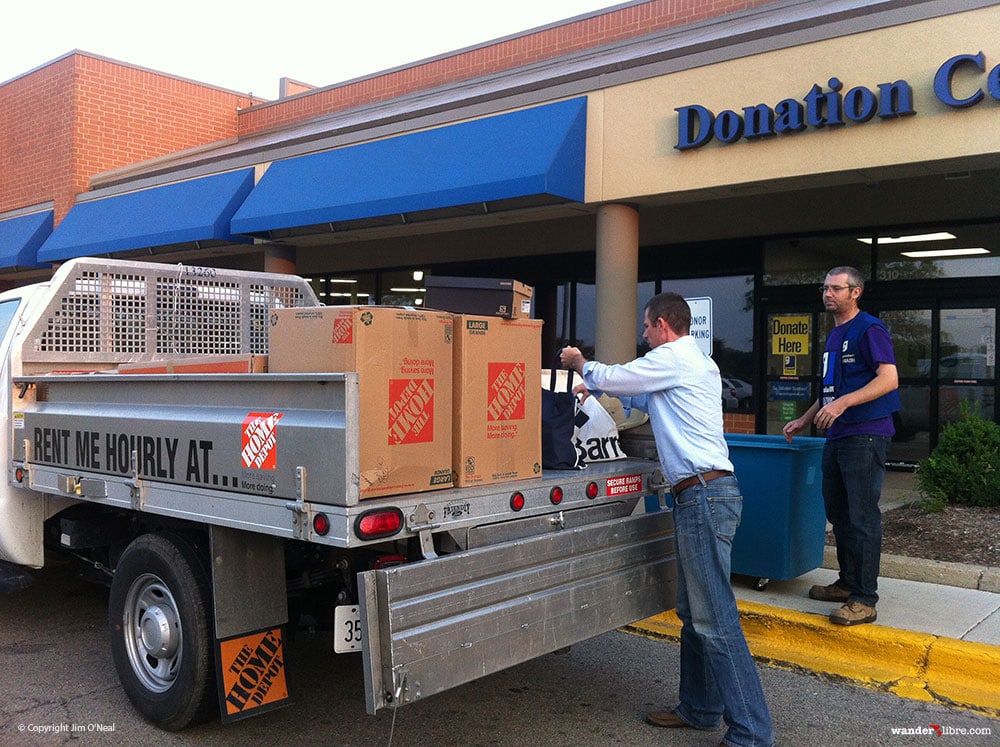
But of all who benefited from our generous spirit, no one benefited more than our next-door neighbor. For the reason of proximity to our front door, we granted her a right of first refusal on much of what we planned to give away. "If you come and get it, you can have it."
It was a symbiotic relationship, which I found fascinating. Not because she was happy to take boxes of our stuff, but because she was so eager to take it while giving us detailed updates on her attempts to downsize. As she often said, "I'm looking forward to retiring in Florida and living with less stuff."
In the beginning, as we began selling on Craig's List and eBay, she would stop by frequently to poke around our make-shift showroom. Each time she'd comment "You have such lovely things. It's such a shame I'm downsizing so I can retire to Florida. If I had room, I'd buy it all."
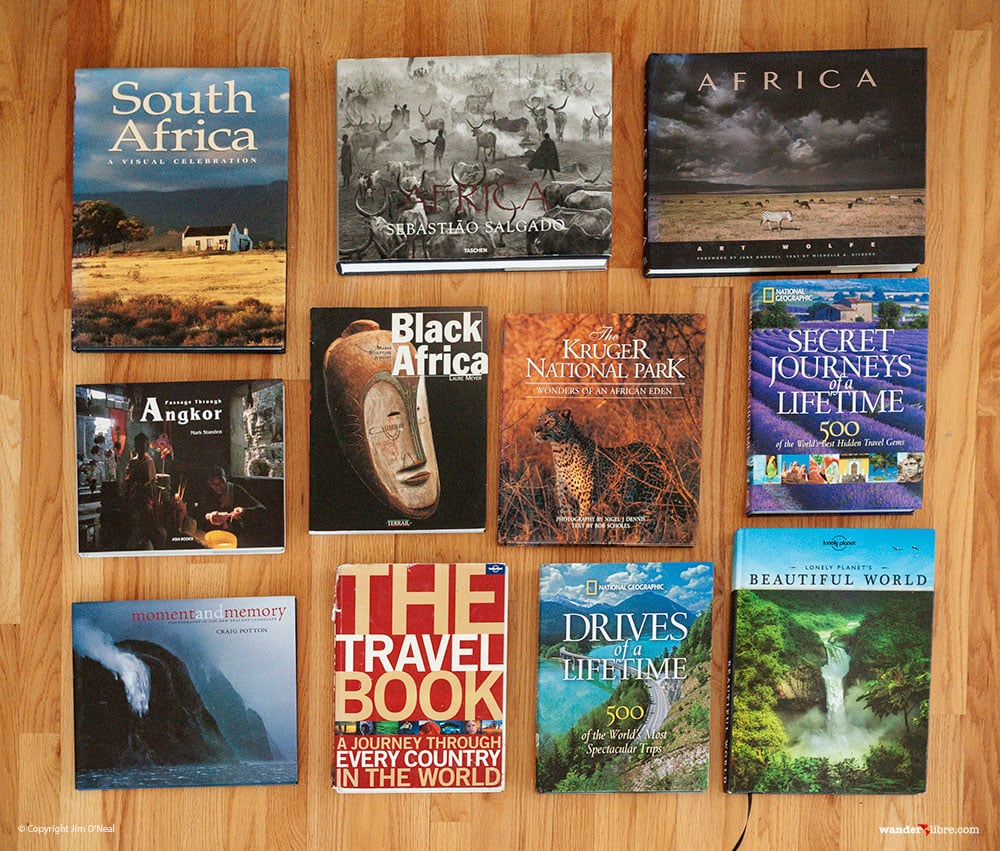
Later, when we began giving items away, her attitude changed. She'd say, "So, what are you guys doing with those baskets? And that book? And all that cookware?" And Sheri would reply, "We're planning to give it away. I know you're downsizing too, but is there anything you can use?" "Oh, gosh." She'd reply. "I really don't have room, but I guess I could take that box of cookware…. And maybe those books. And, I really shouldn't but, well…I guess I could take all the rest of it too."
By the time we finished downsizing, our neighbor had lost all focus on living with less, her garage so full of our stuff she could barely park her car. I think she even agreed to take our overused toilet plunger and that half-empty bottle of Preparation H.
To Recycle or Not to Recycle
By the time we reached the boxes marked ‘Recycle/Trash,' we were getting down to the wire. With only a couple of weeks until our deadline, we were feeling the pressure to get rid of what remained.
To be honest, we put off the recycle/trash decision, thinking it would be quick and easy. It wasn't. In fact, it was a completely unexpected time-suck — part of the hidden layers of the onion I described above.
The problem was figuring out how to get rid of it responsibly. And by responsibly, I mean more than just being environmentally responsible. I mean, how do we, for example, make sure all those VHS tapes, external disk drives, and old laptops are free of personal data. God forbid that sex tape – the one that involves a neighbor's trampoline, a swimming pool, and a clown costume – turns up on YouTube because we failed to properly erase the hard drive on our old MacBook.
One of my most painful downsizing memories involves sitting on a floor in our den surrounded by dozens of items marked for recycle or trash. It was all the stuff you accumulate in life. Stuff that inhabits junk drawers, occupies closet shelves, and fills attic boxes. A box of old VHS tapes with who knows what on them. Three old laptops with hard drives filled to capacity. A couple dozen used batteries. A half-empty gallon of latex paint. A collection of printer cartridges for a printer we no longer have.
Stuff that ate up valuable time figuring out what to do with it. Should we drill holes through the hard drives? Do we destroy the VHS tapes or watch all 60 hours to make sure there's nothing worth keeping? How do we responsibly dispose of used batteries?
Take a pile of underwear sitting on the floor marked ‘Recycle??' Staring at the pile, I recall being mired in debate:
Sheri: "What do you want to do with all these clothes?"
Jim: "I'm not sure how to recycle this stuff. Let's just toss all of it in a box and take it to Goodwill."
Sheri: "Yeah, but most of this stuff is pretty nasty. Just look at your Patagonia boxers and those Smartwool socks. Don't you think they're a bit tatty for Goodwill? I mean, do you think someone's going to want your stinky hiking socks? That's why I marked this stuff ‘Recycle.' I'd be embarrassed to Goodwill this stuff.
Jim: "Right. But I don't want to throw all these clothes in the trash."
Sheri: "Exactly. Let's recycle it is."
Jim: "Recycle boxers? I know Patagonia's all about recycling old clothes, but would they take my old boxers? God help the person who buys a new Capilene base layer made from my underwear."
Sheri: "If Patagonia won't take it, what do we do with it? I'm guessing you can't just toss it in a recycle bin. Let me do some research. I'm sure we can figure it out online."
So, now we have a new to-do. Out comes the iPad to see if Siri can figure out how to responsibly dispose of a pile of threadbare underwear which probably should be tossed in a hazmat bag until it's burned and buried in the back yard.
A half-hour later we're throwing our hands up in frustration after we realize we've just burned 45 minutes trying to dispose of underwear.
Can't Give it Away
On the final day before our deadline, we were nearing the finish line. The project we dreaded for so long was almost complete. Walking through our three-story townhouse, I felt an enormous sense of progress. In the garage, all that remained were the things marked ‘keep.' Our car, motorcycles, and travel/outdoor gear, which would soon be bound for Santa Barbara – the first stop in our newly minted location independent life.
Upstairs, on the main floor of our house, it was virtually empty. By the stairs, there was a scanner, shredder, and an alarmingly tall stack of files awaiting Phase 2. Scattered about the floor was an empty box, some packing paper, bubble wrap, and tape — the only remnants of a hectic three months where our house doubled as a shipping depot.
In an otherwise empty house, one item still remained. In the middle of our naked living room sat our sofa. Our sofa was important to us. A cherished part of our favorite room in our home back in DC.
As background, when we purchased our home in DC, we commissioned a decorator friend to help us create a ‘travel room.' Our travel room was the center of our home. It was a warm and inviting space, where we spent countless hours sitting by the fire relaxing, reading, and pontificating about travel. It was a room designed to convey the Hemmingway-like charm of an African safari lodge with rich hardwoods, earthen tones, and art from past trips to Southern and East Africa. It was our spot to unwind from long flights and plan future adventures.
But standing in our living room, with only a few hours to go before we had to be out of our house, our sofa was a problem. It simply wouldn't sell. The result of our failure to recognize that Craig's List wasn't the right sales channel until it was too late to do anything about it. Our custom-made sofa from a niche designer lacked the Craigslist-friendly recognition of popular brand names like Room and Board, Restoration Hardware, or Pottery Barn - and no one was biting.
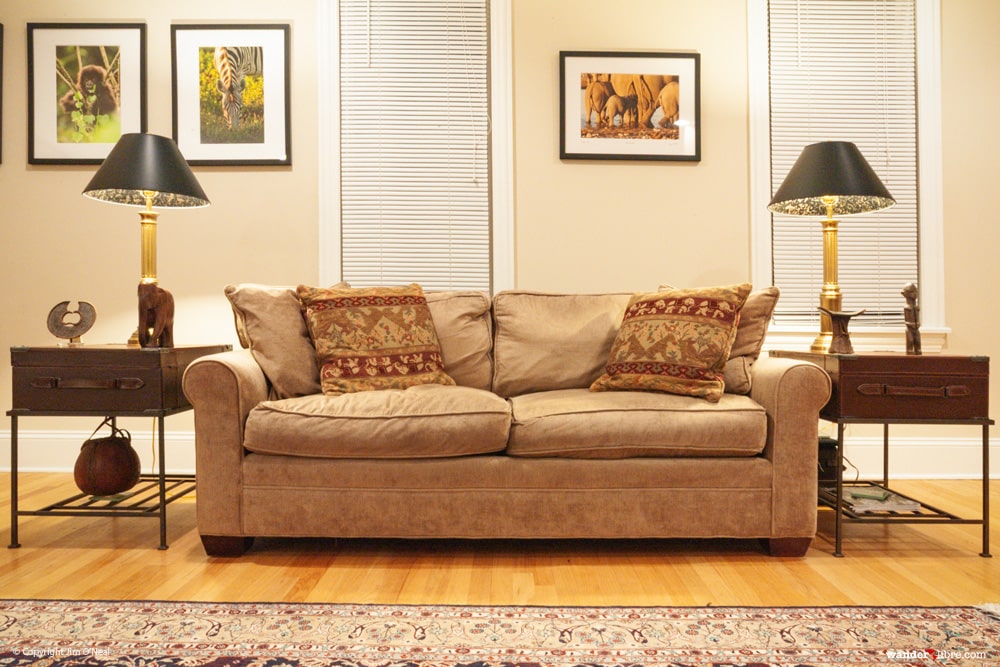
In the weeks leading up to our departure, our hopes of receiving fair value for something we'd paid thousands of dollars for was waning. With no bites, we began slashing prices like a going out of business sale - $1,499, $1,249, $999, $749 (less than we got for a basic Pottery Barn Table), $499, $349 (less than we paid for a used Ikea sofa), $199, $50…
By the final week, all hope of selling our sofa was gone, and we began exploring options of last resort. The only consignment shop in town had gone out of business. We contacted an organization working with refugees; they wouldn't take it. We contacted Goodwill; they wouldn't either. We offered it to a friend, but it didn't match his décor. Even our neighbor, so quick to take everything else, was out of space. "Where will I park my car?"
So, standing in our living room on the final day, we were desperate. We had to be out of our house by midnight, and our sofa was without a home. When I left for work, it was still a problem without an answer.
Around noon, Sheri called me with an idea. "I called Salvation Army and they'll take it. We just have to drop it off." This news was encouraging, although dropping it off was a problem since we had already sold our Land Cruiser.
Sheri continued "We can rent a pickup from Home Depot for $20 / hour. If we hurry, maybe we can get the job done before we've spent enough on the pickup to buy a new sofa. Can you come now?"
When we arrived at the Salvation Army drop location, we found a sprawling warehouse buried behind a parking lot covered in a mountain of Chicago's discarded junk. Negotiating a path through the rubble, we found a woman inside who promptly turned us away. "Sorry. We're full. We can't take any more furniture."
Staring at the mountain, I couldn't believe it. From the looks of it, they'd take anything. Amongst the piles, I spotted a cracked toilet seat and a woman's housecoat, and I can only surmise the coroner's office donated it after the owner's autopsy. I could swear I even saw a used diaper poking out of the pile. "Are you sure?" Sheri said. "We called earlier, and the person I spoke to said you would take it." "I'm not sure who you spoke with, but we're full." And with that, she disappeared into one of the piles.
Standing in the Salvation Army parking lot, we found ourselves shackled to a sofa we couldn't get rid of, in the back of a rent-by-the-hour pickup. It was a less than ideal situation that had us begging Google for answers. Google's response was another Salvation Army drop location thirty minutes away. To avoid a repeat, Sheri called ahead, but no one answered. We went anyway.
When we arrived, we found a sign at the entrance with an arrow directing us down a clearly marked driveway to donations. Following the sign, we drove down the path and around a sharp corner, where the road disappeared into another mountain of junk.
In front of the pile, we were greeted by a man who, without a word, walked to the back of our rent-a-pickup, dropped the tailgate, grabbed the sofa by one end, and pulled it off where it let out a yelp when it hit the ground. Mildly horrified, I offered my assistance, which the man declined, dragging our sofa screaming across the pavement before picking it up and tossing it like a dead body onto the pile.
That's the last we saw of a sofa we'd managed to keep spotless for years. I shudder to think where that poor thing is now! Perhaps it's still buried somewhere beneath the piles of Chicago's discarded junk.
The End of a Journey
Dropping off our sofa at Salvation Army marked a somewhat traumatic end to our three-month purge. When I told my dad about our experience, he replied: "Well, that's the life you chose." I know it wasn't meant as an affirmation, but he was right. It was the life we chose, and as hard as it was to see our sofa tossed onto the heap, we felt liberated. Another vital piece of our lifestyle dream was now in place. Going forward, we would be living with less and traveling more.
At midnight on July 31st, we were blissfully free. Behind us, an empty townhouse, once filled with all our worldly possessions. Ahead, a more minimalist lifestyle that affords us endless opportunity to go anywhere we please.
Downsizing Tips & Advice
Establish Clear Goals
Ask yourself a simple question – why do I want to downsize? Is your goal to get rid of clutter, live with less, or a truly minimalist lifestyle? Or perhaps it's something else? Is your motivation strong enough to see the project through to the end? Are you willing to make the sacrifices required? If the answer is yes, be sure to define your downsizing goals clearly.
Convert it From a Cost into an Investment
When setting goals, view downsizing as a financial opportunity as much as an opportunity to live with less. Rather than paying storage, maintenance, and depreciation to keep things you don't need, sell them and invest the cash so it can grow.
Create a Downsizing Plan
Create a plan to guide your project. The goal is to establish clear guidelines so that decision-making is as quick and easy as possible. The more you can avoid emotional debate and round-and-round ‘what if's,' the better off you'll be. Here are some thoughts to get you started:
Set a Deadline
Be realistic but firm. The aim is to be efficient and time-bound rather than letting your downsizing project drag on indefinitely.
Establish Clear Guidelines
Try to set clear criteria to help you quickly and easily identify what to keep and how to efficiently dispose of everything else. The more objective you can be, the better. As noted above, the goal is to avoid long drawn out decisions for each and every thing you own.
Create a Sales Plan
If one of your downsizing goals is to maximize income from items you're getting rid of, then create a basic sales plan. Be sure to find marketing channels that align with what you're trying to sell.
For example, we had better luck selling our motorcycle gear through a specialized site (advrider.com), than sites like craigslist.com.
Also, if you're okay accepting less than top dollar, be sure to check out companies like Replacements Limited (china and crystal), B&H Photo (Photo Gear), Adorama (Photo Gear), and Apple (Computers, Smart Phones…) who buy used items. It's a quick and easy way to sell unwanted stuff.
Give Back
If you don't want to sell it, be sure to ask yourself if it's an item that might be valuable to someone else. There are infinite opportunities to donate to worthwhile causes ranging from churches, to NPR (Cars), and NGO's focused on causes ranging from aiding refugees, the homeless, and cancer. Here is a useful article on the best places to donate your used items.
Recycle
If you're downsizing, chances are you'll be disposing of a lot of stuff. If it's not worth donating, avoid the temptation to throw it in the trash. These days, an ever-growing list of companies including Apple, The North Face, Patagonia, and Microsoft recycle used computers, smartphones, clothes, and more. Sometimes they'll even pay you something, or offer a store credit or discount on new products.
Invest in a Good Scanner & Shredder
Consider adding ‘going paperless' to your downsizing plan. Not only does digitizing help you downsize, but it also allows you to access all your documents, photos, and videos from anywhere in the world – an essential part of creating location independence. We used and liked the Fellowes Powershred 79ci Shredder. Another great (and less expensive) option that was given Tech Gear Lab's Editor's Choice Award for Best Overall Shredder is AmazonBasics 12 sheet Microcut shredder. Happy shredding!
Consider a Trial Run
If you find yourself interested in downsizing, but you're struggling with the reality of getting rid of your stuff, consider a trial run. Identify what you need and store everything else away. If you don't miss it while it's in storage, you probably won't miss it after you get rid of it.
Avoid Irreversible Mistakes
When creating your plan, try to set guidelines that are more focused on avoiding irreversible mistakes than getting 100% of your decisions right. As long as it's replaceable, you can always replace an item if you need it later.
Ease the Sting of Saying Goodbye
If you're struggling to say goodbye to something, consider doing one (or all) of the following:
Take a Photo
Do you have photos of the item? Perhaps, a photo you took while you were using it, which brings back good memories. If not, consider taking a photo as a memento. Or you can go further and conduct a full-on photo shoot – possibly as part of using the item one last time.
We were quite attached to our Land Cruiser, Betty, which we drove across Africa. But she wasn't hard to sell, mainly because we had so many wonderful photos of our car to remember her by.
Find it a Good Home
Another way to feel better about disposing of something you're attached to is by finding it a good home. That's how we sold Willy, the Land Cruiser we spent 11 wonderful years with skiing, camping, trail running, and exploring the US and Canada. I hated getting rid of that Land Cruiser, BUT her new home in Montana made us OK with selling. As I noted above, she's in better shape than ever and even has her own Instagram account.
Offer a Right of First Refusal
For some items, consider offering a right of first refusal before disposing of it. If, for example, you're reluctant to dispose of your childhood trophies because you're worried about what your mom will think, then explain why you're getting rid of it and offer it to her first. She may or may not understand your motivations for downsizing, and that's OK. The point is to give her the choice to keep it or let you dispose of it. If she chooses to keep it, great. If she declines, it's easier to dispose of it with less guilt – after all, if it was so important to her, why didn't she take it?
If you'd like to learn more about minimizing your stuff, a good start is the best selling book about the KonMari method: The Life-Changing Magic of Tidying Up by Marie Kondo.
Interested in reading more Related Posts?
We are a participant in the Amazon Services LLC Associates Program, an affiliate advertising program designed to provide a means for us to earn fees by linking to Amazon.com and affiliated sites.
